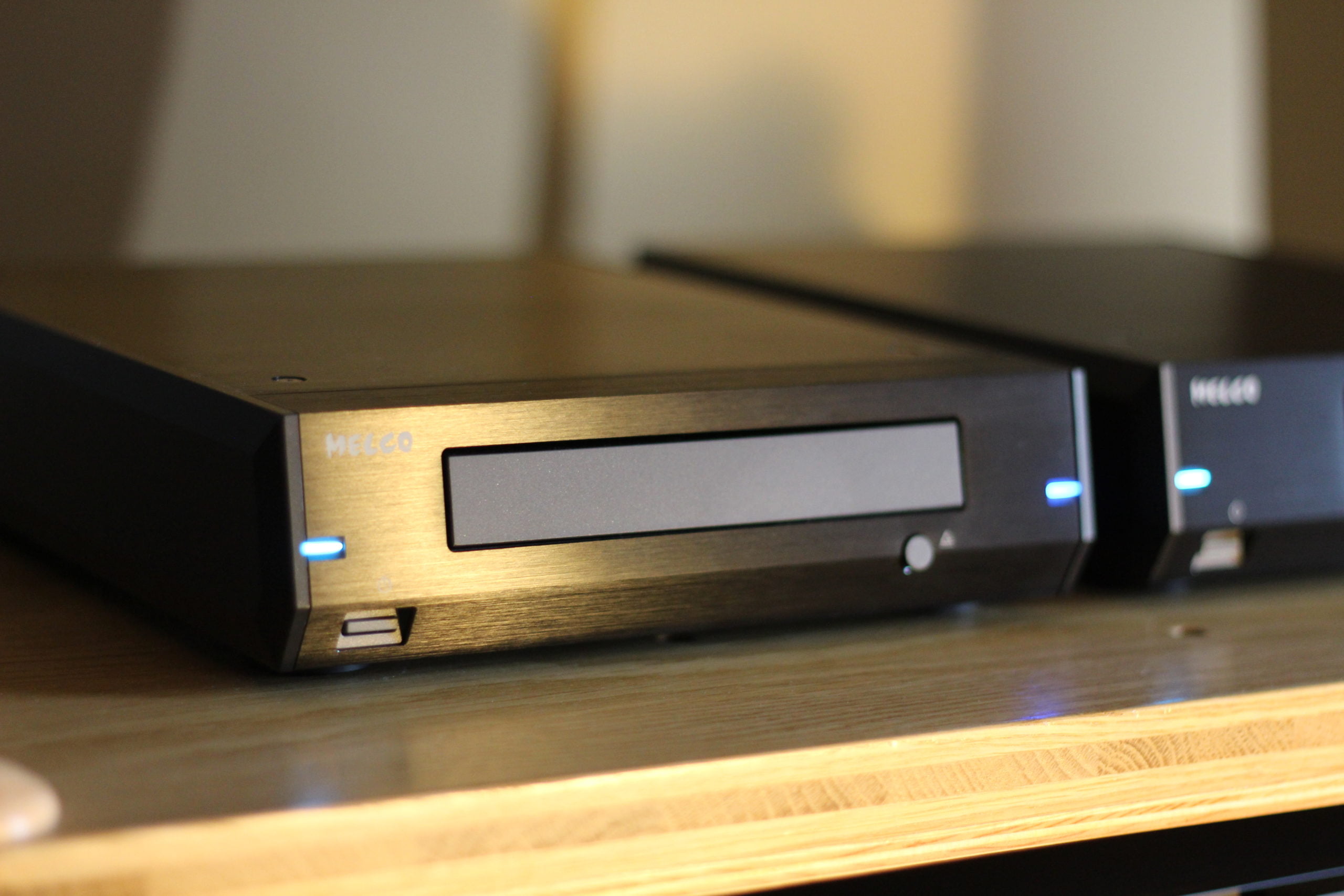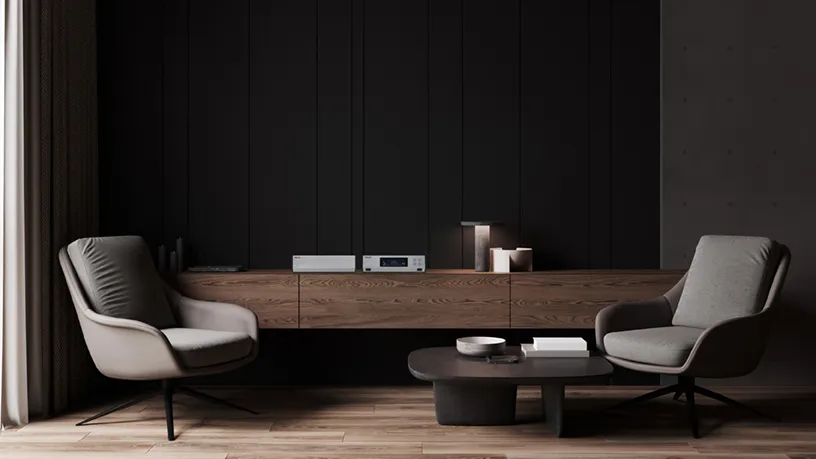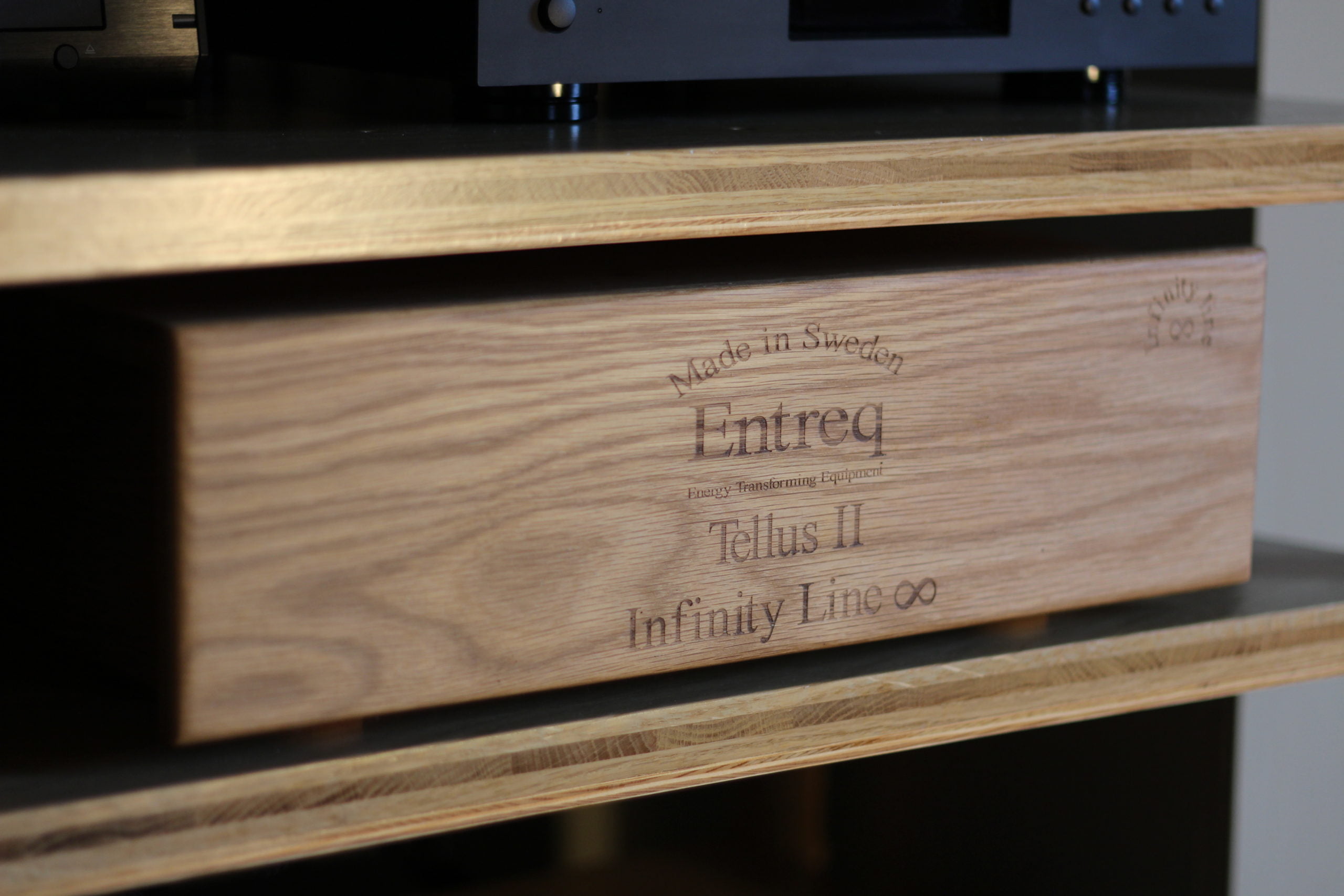25th July 2024 · Melco Audio
Streaming or Playing Music from Storage, plus Network Upgrades

There is no doubt that streaming music has come of age, so many products offer high quality uncompressed music services that can stream Tidal, Qobuz, Amazon and Deezer, plus you have Roon with their great user interface, it has never been easier. Streaming generally sounds great, it is easy to use and very convenient with literally millions of tracks available to play in an instant, for many it is all that will be needed for a good sounding source for their system.
I have several fantastic streaming solutions within my portfolio, as many will know Melco is one of my brands of choice, they were one of the very first products I dealt with when I first started Audio Therapy back in 2017 and today they are stronger then ever. When connected to a USB DAC any Melco Music Library can stream Tidal or Qobuz, plus those on the EX platform also have the option to run their Melco as a Roon Ready Endpoint, so they cover a lot of bases. They aren’t complicated to operate and in performance terms at every level of their range they all sound superb.

Playing music from HDD or Streaming?
I’ve a large database of Melco owners and a recent conservation struck a chord with me – I’ve a customer with an older N1ZH/2; this model was just over £5000 when new, it has 2 x 3TB hard drives onboard, enough capacity to comfortably store around 5000 albums. The customer mentioned in passing that he only had around 90 albums stored on the internal drives, but I know he owns around 2000 CDs which are packed away in the loft, for day to day listening he uses Qobuz, it sounds really good in the customers system and it’s obviously very convenient.
But, as good as streaming can sound experience has taught me that greater performance is always achieved when music is played back from storage as opposed to streaming them. Stored music can come from ripping CD’s directly to the Melco, or from downloading 24 bit music (an EX Melco will download Qobuz purchases directly) or importing via a USB stick or hard drive.
The customer’s initial reaction to me suggesting this was along the lines of I can’t imagine it will make that much difference sonically and that it sounded rather laborious. The latter statement is certainly true, ripping a large music library is time consuming and clearly is not as convenient as streaming, although I would argue it’s not a complicated process and as music lovers and audiophiles some additional effort to ensure your music is played back at the very best possible quality isn’t too much to ask.

I offered to let this customer borrow my Melco D100 for a few days so he could rip a selection of his favourite albums and and play them from the Melco HDD to compare them to the versions he streams, I also suggested he should purchase and download a couple of his favourite albums from Qobuz so he can compare them to the streamed equivalent.
After a little tuition and a few days of ripping CD’s and downloading a handful of albums the customer called me to place an order for a D100, he said I wasn’t his favourite person as I’ve just given him the mammoth task of ripping his entire CD collection, he was incredibly impressed with how much better the CD rips were when comparing them to Qobuz streams of the same album. The feedback regarding Qobuz downloads was much the same, he also said when comparing CD rips to the Qobuz alternative he was often listening to the 24 bit version via Qobuz but in many cases he preferred the 16 bit CD rip playing off the HDD.
He thought initially that the gains were marginal, but after spending some time with music he knew really well the differences become more obvious, he said there was greater clarity, detail and weight, and the improvements were a bit like cleaning a dirty window or mirror and all of sudden finer detail and images had snapped into focus more clearly.

The customer admitted that he thought that his CD purchasing days were well behind him, but based on the results he is getting I’ve a feeling he may not give up on the small silver discs just yet, moving forward this customer said he will still use Qobuz for discovering new music, but he will purchase the albums which he enjoys the most either on CD or download the hi-res version.
I come across many customers where this situation won’t be relevant as streaming music is all they do and they don’t possess a physical music collection – the number of customers who disposed of their CD collections via eBay or charity shops over the past few years is quite significant, for many streaming exclusively works perfectly and is more than good enough, this comes down the customer and the performance of their system, I can happily stream music and thoroughly enjoy it when exploring new music, but I always end up buying those albums I enjoy the most one way or another.
One other angle here is that this customer could have left his CD’s in the loft and improved the performance of the streaming side of this system, he could have bought a Melco switch and an ADOT Fibre kit and saved himself the effort of ripping his CD collection, but as the customer said a D100 is less money, he already owns the CD’s and they sounded superb, I’ve no doubt that some network upgrades will happen in the future, giving him the best of both worlds.
Noisy Networks and Improving Performance
As good as streaming can be the home network is a melting pot of noise and interference which holds back system performance.
This can be down to a number of factors – inexpensive ISP routers and switches, poor quality power supplies, plus the sheer number of devices that typically exist on a home network – how many phones, tablets, televisions, games consoles, smart plugs, smart lights and suchlike exist on a typical home network? All of these elements can have a detrimental effect on streaming performance and by addressing a few key areas it is possible to improve things quite dramatically.
Adding a good quality network switch like the Melco S100/2 have been popular solutions since their launch and installing one of these between your router and system can have a profound impact on streaming performance, more so than most people initially anticipate.
The S100/2 is £2100 and has ample connectivity, there are 2 fibre ports and 8 ethernet ports, it comes with a sensible power supply to get up and running, all you need to do is make your connections and power it on and you are up and running. You can further enhance the performance of the S100 by adding an external power supply, the 12V Plixir Elite has served as a great upgrade, the majority of people who have bought an S100 have ended up adding a Plixir, this PSU is £595.

Earlier this year Plixir released their flagship power supply, the Statement, this is £1750 and has 2 outputs, even if you require a single output the Statement is a sizeable step up in performance over the smaller elite. The remit of either Plixir is to provide clean stable power which helps keeps the noise floor low which in turn helps the S100 deliver the very best performance, I’d argue that a Plixir should be a day one purchase for an S100 – I keep both PSU’s on permanent demonstration and home loans are no issue.
Introduce an S100 into a streaming system and it improves every element of the music, the dynamics improve – there is greater detail and improved bass, better articulation and tone. They add greater refinement to the music, making things sound more real, alive and tangible.
The S10 is Melco’s 2 box switch, the head unit of the S10 is an enhanced version of the S100, 2nd box is a high quality power supply. If you put the S100 and S10 head to head in a good system the S10 always comes out on top, even with the Plixir on the S100. The S10 is priced at £5000, what an S10 brings sonically isn’t fundamentally different to an S100 but it simply gives you even more of all of the positives the S100 brings, even if your S100 has a Plixir powering it, the step to an S10 isn’t subtle.

To compliment the Melco switches further are the ADOT Fibre Converters. Both S100 and S10 have 2 fibre optic ports (SFP), the ADOT is designed to sit in-between your home router and Melco switch and converts the ethernet signal coming out of your router into fibre, which feeds into one of the 2 SFP ports on the switches. The second SFP port can be used to connect to a streamer or server that offers SFP connectivity (Melco N1, N5, Taiko Extreme, Linn Klimax DSM, Lumin X1 to mention a few) – Melco make a specific cable for this role called a C1-D20 which is an SFP+ cable.
The most popular ADOT kit has been the Single Mode MC03 – this comes with a 5V Plixir PSU (£595 to purchase separately) to power the media converter, it is priced at £1075 including a 1.5m fibre cable (longer cables are available). With these kits and the switches many sceptical customers have been wary of the alleged benefits they can offer, a no obligation home trial is never an issue and the feedback I receive is always positive.
There are no shortage of other options such as a better power supply for your router – most routers have pretty basic power supplies and improving this with a well designed linear PSU is another great solution. Many routers have different power requirements and use different size plugs so it worth checking the specific requirements of your router before jumping in. The BT Smart Hub is 12V and I’ve supplied quite a few Plixir for this application, they do a dual output 12v version that can power both S100 and a router simultaneously and is great value if you have 2 devices that run off 12 volts, in many cases a specific cable is needed as the size of the DC plug for routers can vary.

Adding an Entreq ground box such as a Macro Kit, Silver Minimus Infinity or Olympus Ten Tungsten, installed on a router, switch or directly on a streamer itself is well trodden ground here at Audio Therapy. They draw away noise from whatever they are connected to and improve performance by instilling a sense of calmness and refinement over the music, they unlock more detail and give the presentation greater poise and authority, they frequently raise an eyebrow from many, but across their range they have been hugely popular, the vast majority of people who try some Entreq end up coming back for more.

The Tellus II Infinity has been been a great option, it’s a larger box but you get 2 Silver Minimus Infinity and 1 Olympus Ten so you can attack multiple items at once, not everyone has their router sited close to their system so a Macro or Silver Minimus Infinity next to the router is a common addition with something like a Tellus II placed with the system.
Changing your ethernet cabling can also pay dividends, there are no shortage of options, earlier this year Shunyata Research launched 2 new ranges of cables, the Gamma and Theta which replaced the older Venom and Delta ranges. These 2 cables are relatively affordable compared to some cables that are available and since their release they have both gone down very well, Gamma is priced at £350 for a 1.5m length, Theta is £500.
Theta has been particularly strong, I’ve a customer with a Gold Note IS-1000 Deluxe and a Melco S100, I recently loaned him a Theta cable to compare it to his existing cable (which was around £400), the customer ordered one pretty much on the spot. The moment the music started you could hear there was greater authority, more coherence, the sense of air and ambience was dramatically improved too. The customer passed comment on how good the Theta sounded relative to its price, he said that had the Theta been twice the price he still would have bought one based on what it did to his system. They sound excellent andall of the feedback so far it pointing at how good they are for the price.

One further example is the Vitus RI-101 mk2, with its on board streaming DAC the price of admission is £21500 so it’s a serious product – you simply need to add speakers and a network connection and it can be the centre of a complete and serious high end system. The entry level amplifier from Vitus makes a really compelling argument for replacing multiple boxes with one and driving performance dramatically forward at the same time, it is a true landmark product which never fails to impress. Most simply connect the Vitus direct to their home router, but you can take the performance of the RI much further by putting a little emphasis on the network.
Add a Melco switch and a couple of Theta ethernet cables, or an Entreq ground box you can really take the Vitus to a new level of performance and sophistication. Some customers will cover every base and really push the envelope to improve performance, others may only look to improve 1 or 2 specific areas, it all depends on your system, budget, space and how any given item works in your system.
Please don’t underestimate the level of improvement you can gain by spending some time optimising your network, at all level of systems there are changes you can make which will improve performance, many rush to upgrade boxes and speakers without putting any focus on improving the fundamentals of their system.
By addressing the foundations many customers have subsequently saved money by not chasing that mystical audiophile pot of gold and actually focussing on improving their system correctly, we are here to assist wherever possible.








